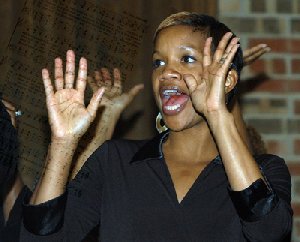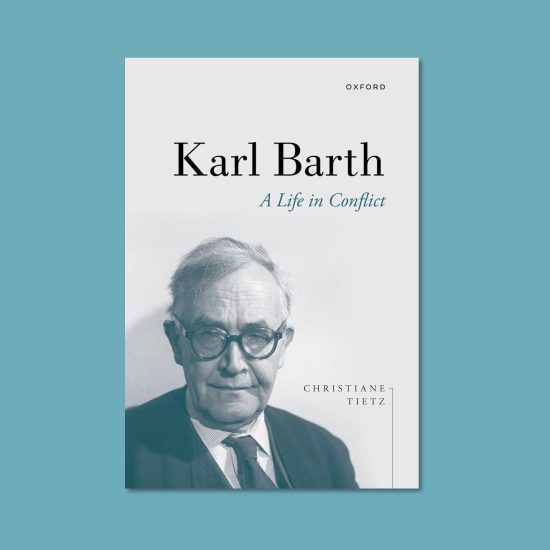“If you know what hymns a congregation is most addicted to, you will be able to infer what, in Christianity, means most to that church.”
 |
When the late hymnist Erik Routley wrote that in 1982, worship wars in the United States had reached fever pitch.
More than a quarter-century later, the clash — especially between advocates of hymns on the one hand and praise and worship choruses on the other — essentially has stalemated. While worshippers still maintain strong stylistic preferences, and often voice them aggressively, church musicians today seem to be focusing less on stylistic disagreements and more on content.
Even so, Routley’s words still ring true — and for good reason. Centuries after the first Christians crafted simple hymns to express their faith, music sung and heard in congregations continues to shape Christians’ theological outlook.
Solid content — undergirded by compatible music — is crucial, many church musicians insist.
In evaluating Christian choral music, music directors should ask, “Is the text of a particular [worship song] really worth remembering?” said Deborah Carlton Loftis, executive director of the Hymn Society in the United States and Canada. “Considering that repeating the words of many songs will plant the text deep in a congregation’s memory, is it worth it?”
Loftis, who also is visiting professor of church music at Baptist Theological Seminary at Richmond, is one of many contemporary musicians and composers prepared to “give a great deal of stylistic leeway, depending on the particular context,” while keeping a sharp eye on the message communicated.
“If the text communicates the gospel accurately, that would be a first step in passing muster,” said Loftis, who is helping to develop Celebrating Grace, a new hymnal to be released next year by Mercer University in Macon, Ga.
“If the words don’t communicate an accurate and true picture of the gospel, then that song is inappropriate.”
The waning — or at least diminishing — of the worship wars is due at least in part to the maturation of praise and chorus songs, some church musicians noted. While plenty of composers still churn out repetitive choruses with little staying power, others — like Keith Getty and Stuart Townsend — are crafting careful texts with hymn-like musical structures.
“They [Getty and Townsend] are writing contemporary hymns that sound like praise and chorus,” said Mark Hayes, a Kansas City composer whose anthems are widely sung in churches across the country. “They are strophic, have four to five verses, are solidly theological but not in such a high poetic form that people can’t get at them.
“They’re not choruses that you repeat over and over. And they’re making their way into hymnals.”
Hayes, who studied music at Baylor University, said the mission of composers like Getty and Townsend is “to bring back contemporary hymnody in a different way from, say, Fred Pratt Green,” a 20th-century British hymnist whose work often is sung in liturgical churches.
But the less polarized worship environment can also be attributed to the emergence of hymn writers influenced by Green — like Brian Wren and Thomas Troeger — in the last two decades of the 20th century, which reinvigorated traditional hymn forms. They attempted, Wren wrote, to “combine theological freshness and depth with simple language, to express people’s theology, and at times stretch or re-articulate it.”
Combining simple language, theological substance and poetic richness “is a challenging task,” said Tim Sharp, executive director of the Oklahoma City-based American Choral Directors Association, the national professional association of choral conductors and others in the choral music industry. “Hymns were meant to pack theology into a tight, memorable suitcase that Christians could take with them.”
 |
Sharp, a graduate of Southern Baptist Theological Seminary in Louisville, Ky., is struck by an irony.
“The great hymnists of the 19th century were always sort of apologetic about hymnody, because a hymn is one of the simplest musical compositions that exists,” he said.
“Actually, when you look at the profound nature of the text and the meters you realize it’s a complicated thing to write a good one, but they were always saying it was simple, was easily accessible to a congregation and the text was memorable in the way that the mind tracks it.
“It’s kind of scary that in the following century we had to get even more simple in praise and worship choruses.”
Worshippers want more than simplistic words, Sharp said, noting that recent surveys indicate Americans are becoming more literate, not less. But worshippers still long for spiritual depth.
“I think congregations are more engaged than some composers assume,” he said. “I’m seeing in people a hunger for thought-provoking text work. A mantra doesn’t seem to be satisfying them.”
Hayes warns against music that undercuts the words.
“You really want to avoid an ‘entertainment’ quality, because if it goes too far with jazzy rhythms — and I’ve done this myself — then it gets in the way of connecting people with God,” he said. “The music overwhelms the text.
“That’s not to say that there aren’t times when you want to feel ([n music] the full force of God’s majesty. But the style, groove, vibe — whatever you want to call it — can’t supersede what the words say. That kind of music doesn’t instruct.”
One way to test it? “Set those lyrics in strophic [stanza] form and accompany them with a pipe organ, and see what impact they have.”
University of Chicago Divinity School professor Frank Burch Brown recently highlighted the key connection between text and music with a paraphrase of the 23rd Psalm — set to the tune of “Rudolph, the Red-Nosed Reindeer.” Over several years, he tested his composition — called “I Know the Lord’s My Shepherd” — with church groups and seminary classes.”
It “has come as a surprise to me, and frankly something of a shock, to find that, with every passing year, a larger and larger proportion of the good Christian folk end up wanting to embrace both the words and the music of ‘I Know the Lord’s My Shepherd,’ ” Brown writes in Inclusive and Discerning: Navigating Worship Artfully, published earlier this year.
He attributes that to an increase of what he calls “irrepressible optimism — the sense that to acknowledge the deep darkness of the shadows or the possible starkness of death itself is to be fundamentally unfaithful; the sense that praise is the alpha and omega of worship, and that the only proper praise is happy praise.”
Sharp detects that “quick resolution and gentle emotional approaches are more popular than other kinds of religious experience,” and that theological inclination is reflected in the texts and tunes of many worship songs.
“I think that’s what divides us more than anything else,” Sharp said. “Some of us want mystery. Some want everything resolved.”
Worship songs written in a pop music genre lend themselves to texts with easy resolution, he said.
“I don’t want to put down pop music,” he added. “I love pop music. I celebrate anyone who can get a hook in a four-line thing and come up with something memorable.… But my relationship with God is one that I can’t always find easy answers for. And I would embrace that struggle.”
Finding a musical setting that undergirds the text and fits in a variety of worship styles is daunting but necessary, said Hayes.
“It’s really good for worship planners to think about the arc of people’s emotions in worship and how they are meeting and experiencing God,” he said.
Rather than ask what kinds of songs are appropriate in worship — choruses or hymns, for instance — it’s better to reflect on the function of songs, says Loftis.
“Songs can be seen as being on a spectrum, from sequential songs at one end to cyclical songs at the other,” she said, attributing the concept to Michael Hawn, professor of sacred music at Southern Methodist University in Dallas.
Sequential songs — many of which are traditional hymns — are linear, taking a theological concept and developing it in each stanza until the conclusion.
“They tend to be didactic. They teach something, explain something,” Loftis said. “They reflect on an idea and they’re pretty content heavy. You need to read it off a page because it’s not easily memorized.”
Cyclical songs tend to be “theme and variation” — few words, easily memorized, often repeated. “Spirituals sometimes fall into this category; so does Taize chant, as well as most praise and worship songs,” she said. “These songs allow the congregation to reflect on whatever it is they’re singing about, and they can do it with their hands free from holding a book.”
Thinking of a song’s function instead of category, Loftis said, might lead a worship planner in, for instance, a baptism service to offer a sequential hymn before the ordinance, explaining what baptism is, while following it with a cyclical song which would draw the congregation together while still focusing on the ceremony and without the need for written words on paper or screens.
“Being open and being humble about your choices is key,” said Hayes. “You have to realize you aren’t going to please everyone all the time. You have to ask: ‘Does it ring true? Does it ring true to the doctrines and faith that we want to instill in our churches?’”
Robert Dilday is managing editor for the Virginia Religious Herald.






